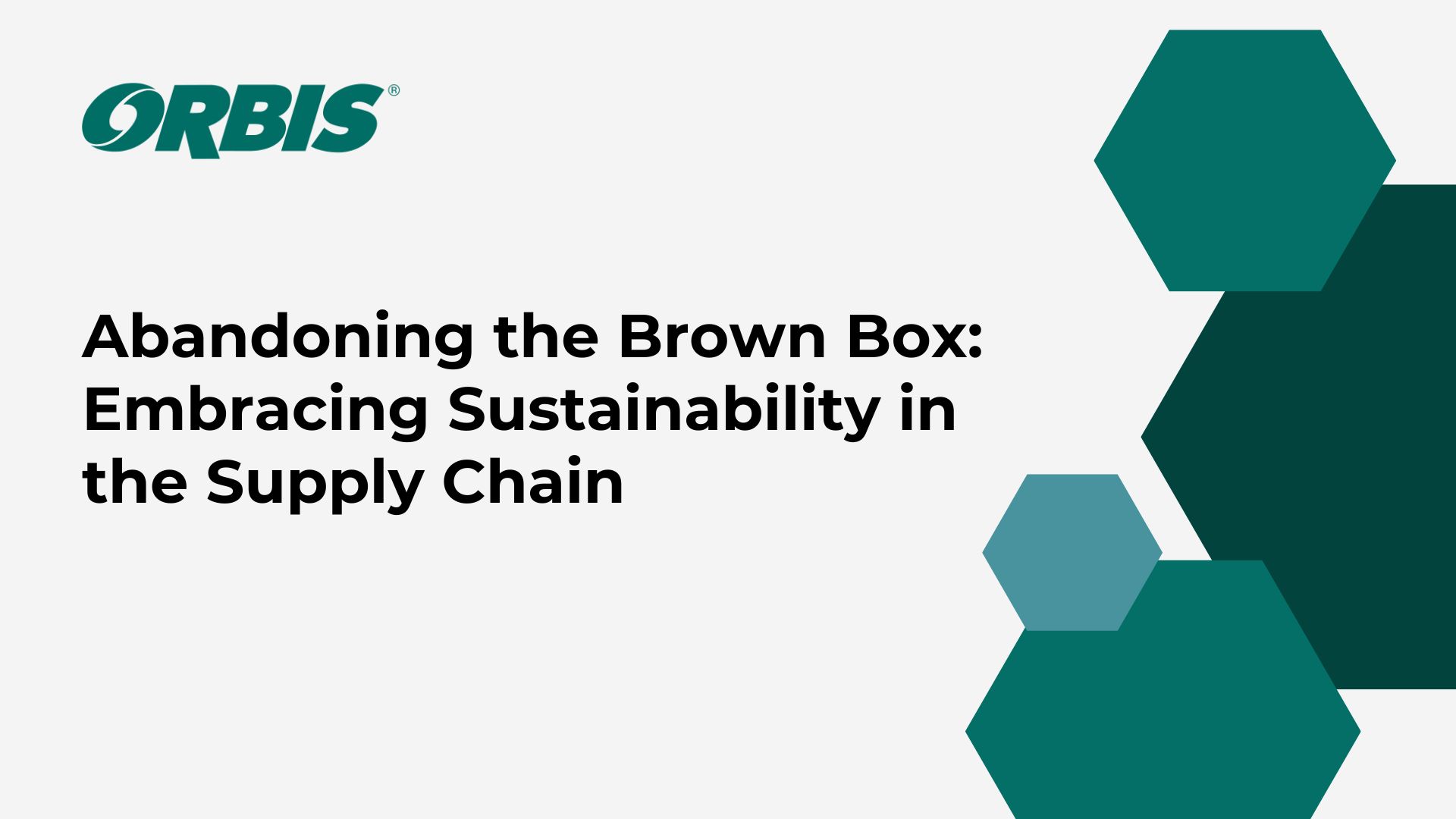It’s no secret that many corporations strive to achieve lower costs, superior performance and improved sustainability in the supply chain. And to no surprise, this effort has spurred innovation in the packaging industry. However, one of the biggest culprits we see holding back sustainability in the circular economy is the fiber-corrugated brown box. In fact, fiber corrugated recycling uses 284 billion gallons of water each year.
Why are brown boxes still used in the supply chain today? A sustainable replacement for them has been needed for over 20 years, but criteria for automation has previously hindered the emergence of an alternative option. Today, supply chain managers are increasingly evaluating their processes to see where, when and how they can abandon the brown box. Starting with identifying its purpose and uses.
Purpose of the brown box
The fiber corrugated brown box isn’t entirely obsolete for several reasons: its flat, crisp, easy-to-break-down design, its low cost; and its ease of disposability. Unfortunately, there are several disadvantages that come with this solution. Brown boxes are unhygienic, emit dust and cause debris, disrupting automated lines by creating system downtime. They’re also a non-robust option that breaks down when they come in contact with moisture, causing possible damage to the products they carry.
That’s why the industry needs a reusable replacement that replicates aspects of the brown box, all while addressing some of its biggest pain points. Supply chain managers are craving a solution that‘s hygienic, reusable and optimized for automation.
Overcoming automation challenges
When looking at the supply chain, you have to consider how the brown box interfaces with automated equipment. Automated lines are increasingly widespread, and the faster a line runs, the more opportunity for variants in production. As automation grows in industries like consumer-packaged goods (CPGs) and food production, it’s imperative we avoid system failures to ensure profit is achieved and labor is properly utilized. Given their non-exact design and construction, brown boxes can easily jam up the machine, illustrating the need for a material with tight tolerances to provide exact dimensions.
So, what’s the solve to this common problem? The answer is simple: plastic. Using a material like plastic means that a box’s design is incredibly precise and dimensionally consistent, making for a dramatic decrease in machinery jams. Plastic also has memory; when you put a dent in it, it will pop back into place, while fiber stays crushed.
Utilizing plastic boxes also addresses concerns surrounding hygiene, product protection, and sustainability through a completely reusable and recyclable design. Incorporating plastic boxes in your supply chain also addresses a need for handler safety. With sealed edges, plastic eliminates cuts to handlers, allowing for a more productive work environment.
Evaluating the supply chain
Despite its benefits, plastic doesn’t always make sense for every piece of packaging. How do you know if your facility is a good fit for switching to plastic boxes? Here are a few important considerations when contemplating the use of reusable plastic boxes:
1. Is there a closed-loop portion of your supply chain? If you can’t get it back, you shouldn’t use it. If you’re shipping overseas or your loop isn’t closed, don’t use returnable plastic because you won’t maximize your ROI. If you can get the plastic box back, it may be a good fit! Plastic boxes are often a good fit for CPGs and dry food goods, as well as many other closed-loop operations.
2. What do your specific warehouse handling practices look like? Does your warehouse use automated machinery? Evaluate your current practices and the level of automation in your warehouse to determine whether plastic boxes make sense. If you’re experiencing a lot of automation downtime due to your current packaging solutions, reusable plastic boxes might help solve that.
3. What are you shipping? It’s important to consider the items you ship and their compatibility with a plastic box. What is the weight of your shipment? We recommend boxes weighing in under 30 pounds when utilizing plastic options.
Now is the time to invest in innovative and environmentally conscious supply chain solutions that support the circular economy. Whether it be plastic boxes or another reusable solution, it’s important for supply chains to increase the percentage of recyclable sustainable materials used in operations. What will you do to improve the supply chain?
CHECK OUT OUR REUSABLE CORRUGATED BOXES

